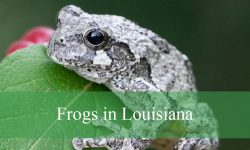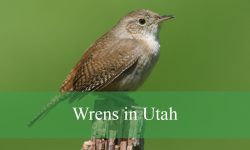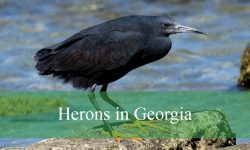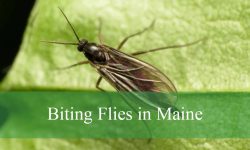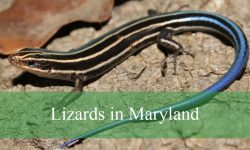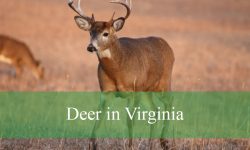Falcons are among the most fascinating and diverse birds of prey, known for their speed, agility, and impressive hunting skills. The types of falcons vary greatly, from the small kestrels to the larger and more powerful peregrine falcon, each adapted to specific environments and hunting techniques. Their sharp talons, keen eyesight, and swift flight make them exceptional predators, with over 40 recognized species worldwide.
In this article, we’ll explore 44 common types of falcons, offering detailed descriptions, identification tips, and a closer look at their natural habitats. This guide will help you better understand the unique features of each species and their behaviors, giving you a deeper appreciation of these remarkable birds.
From the well-known peregrine falcon to the more elusive species like the Aplomado Falcon, the types of falcons in this list represent a wide range of sizes, colors, and behaviors. Each species has its own unique characteristics, making them a captivating subject of study for bird watchers and nature lovers alike.
Different Types of Falcons
Peregrine Falcon (Falco peregrinus)
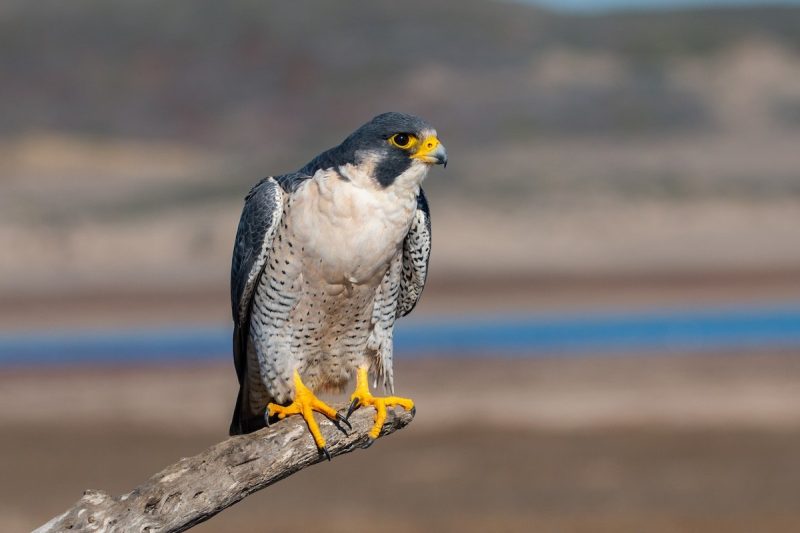
The Peregrine Falcon is widely known as one of the fastest birds on Earth, capable of reaching speeds over 200 miles per hour (322 km/h) during its iconic hunting dive or stoop. This powerful raptor has a strong, muscular body with long, pointed wings and a relatively short tail. Its plumage typically features a blue-gray back, barred white underparts, and a distinctive black “moustache” mark on its face, giving it a fierce and recognizable appearance.
In terms of distribution, the Peregrine Falcon has one of the broadest ranges of any bird of prey. It is found on every continent except Antarctica, occupying a wide variety of habitats including coastal cliffs, mountains, river valleys, and increasingly, urban environments where tall buildings mimic natural cliffs. In North America, they are commonly seen along the coasts, large river systems, and even in major cities like New York and Chicago.
An interesting aspect of the Peregrine Falcon is its remarkable conservation story. Once endangered due to pesticide use, particularly DDT, its populations have made a strong recovery thanks to intense conservation efforts. Today, Peregrine Falcons are often celebrated as a symbol of wildlife resilience and are frequently monitored and protected through special nest box programs in urban areas.
American Kestrel (Falco sparverius)

The American Kestrel, often called the “sparrow hawk,” is the smallest and most colorful falcon found in North America. Males are especially striking with blue-gray wings, a rusty-red back and tail, and a pale underside marked with black spots. Females are slightly larger and have more subdued, reddish-brown tones throughout their plumage with heavy barring on their wings and tail.
This adaptable raptor is found across much of the Americas, from northern Canada all the way to South America. American Kestrels prefer open habitats such as grasslands, deserts, meadows, and agricultural fields where they can perch conspicuously on wires or fence posts while scanning for prey. They are commonly seen hovering gracefully in the air before swooping down on insects, small mammals, or reptiles.
Besides their vibrant appearance, American Kestrels are known for their use of abandoned woodpecker holes or specially designed nest boxes for breeding. Their high-pitched calls, often described as a repeated “klee-klee-klee,” are a familiar sound in open countryside. Despite their adaptability, some populations are declining due to habitat loss and pesticide exposure.
Prairie Falcon (Falco mexicanus)
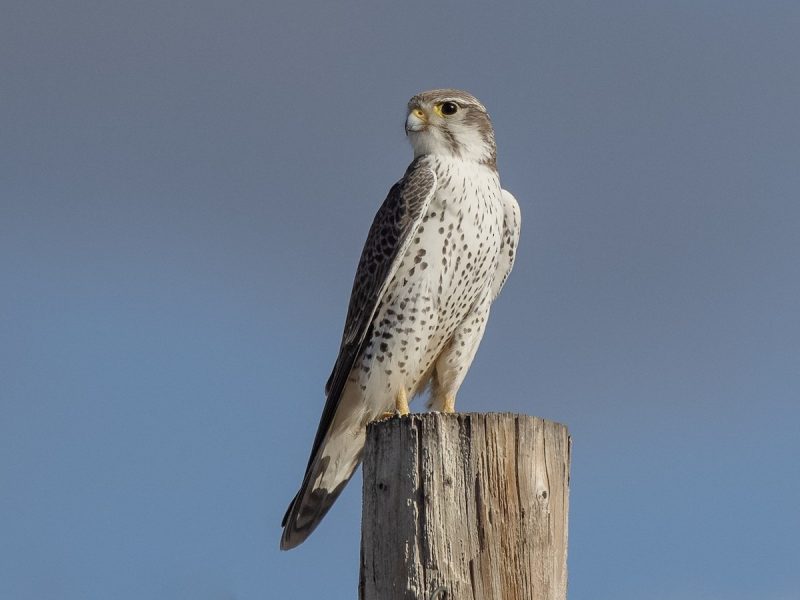
The Prairie Falcon is a hardy and robust raptor adapted to the open spaces of North America’s western landscapes. It has a pale brown back, lighter underparts with faint barring, and distinctive dark axillaries (“armpits”) visible during flight. Compared to the Peregrine Falcon, the Prairie Falcon is slightly less streamlined but built for endurance and swift aerial hunting over long distances.
This falcon primarily inhabits the arid and semi-arid regions of the western United States, from the Great Plains to the deserts of the Southwest. Prairie Falcons favor wide-open spaces like grasslands, shrublands, and agricultural fields where they can hunt ground squirrels, small birds, and reptiles. They typically nest on cliff faces but may also use steep banks and canyon walls.
Prairie Falcons are known for their fierce hunting tactics and willingness to take on prey nearly their own size. They are powerful fliers and frequently engage in long, low chases or high-speed aerial attacks. Their ability to thrive in harsh, dry environments sets them apart from many other falcons, highlighting their remarkable adaptability.
Aplomado Falcon (Falco femoralis)

The Aplomado Falcon is an elegant, slender raptor with a striking pattern of contrasting colors. Adults have a dark slate-gray back and wings, a white throat and upper chest, and a black belly band separating the chest from the rufous underparts. They are further distinguished by a bold black facial mask outlined with white, giving them a sharply defined, stylish appearance.
Historically widespread across the grasslands and open savannas of the southern United States, Mexico, Central, and South America, the Aplomado Falcon faced significant population declines in North America during the 20th century. Today, conservation efforts have reintroduced them to parts of Texas and New Mexico, though they remain much more common in Mexico and throughout South America where they inhabit similar open-country habitats.
The Aplomado Falcon is known for its agile flight and cooperative hunting behavior, often working in pairs to flush and capture prey such as small birds, insects, and rodents. Unlike many other falcons, they frequently hunt on the wing at lower altitudes, using their speed and surprise to their advantage. Their rarity in parts of the U.S. makes sightings especially prized among birdwatchers and naturalists.
Gyrfalcon (Falco rusticolus)
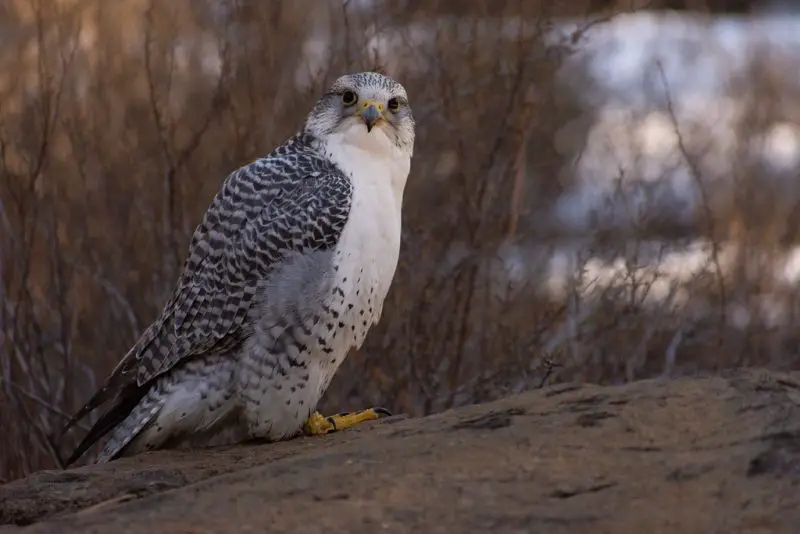
The Gyrfalcon is the largest and most powerful falcon species in the world, known for its bulky build, broad wings, and formidable hunting skills. Plumage color varies widely, ranging from almost pure white to dark gray or even nearly black, though most birds display a patterned mix of gray and white. Its strong body, large size, and fierce demeanor make it unmistakable among other falcons.
This impressive raptor is native to the Arctic and sub-Arctic regions of North America, Europe, and Asia, favoring tundra, open coastlines, and mountainous areas. In North America, Gyrfalcons breed mainly in the northern parts of Canada and Alaska, and a few migrate south into the northern United States during winter months. They are well adapted to cold climates and often hunt ptarmigans, waterfowl, and hares across frozen landscapes.
Gyrfalcons are highly prized by falconers and bird enthusiasts due to their strength, rarity, and dramatic appearance. Despite their remote habitat, they have been studied extensively because of their role as top predators in fragile northern ecosystems. Their population trends are closely monitored as indicators of environmental health in Arctic regions, particularly in the face of climate change.
Peale’s Falcon (Falco peregrinus pealei)

Peale’s Falcon is a robust subspecies of the Peregrine Falcon, adapted to the coastal environments of Alaska and western Canada. It is notably larger and heavier than most other Peregrine Falcons, with darker, sootier plumage that provides excellent camouflage against rocky shorelines and cliffs. Its sturdy frame and powerful flight make it particularly adept at hunting seabirds.
This coastal falcon is found primarily along the rugged Pacific coasts of Alaska, British Columbia, and parts of Washington state. Peale’s Falcons nest on remote sea cliffs, islands, and rocky promontories where seabird colonies thrive. Unlike their more urbanized peregrine cousins, Peale’s Falcons remain closely tied to marine habitats year-round, relying heavily on oceanic prey like gulls and murres.
Peale’s Falcons are considered one of the most specialized peregrine subspecies due to their strong association with marine environments. Their isolated nesting locations and specific diet requirements make them vulnerable to environmental changes affecting seabird populations. Conservation efforts in coastal areas aim to protect both these formidable falcons and the ecosystems they depend on.
Bat Falcon (Falco rufigularis)
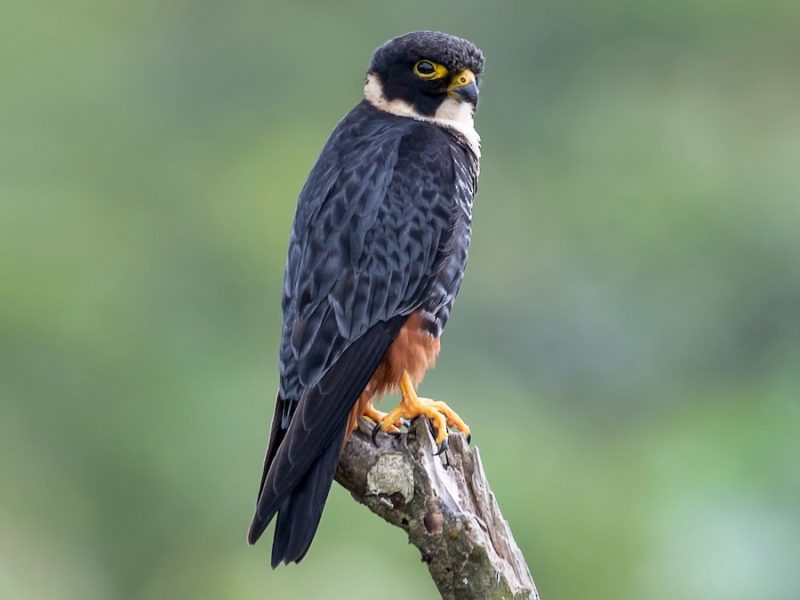
The Bat Falcon is a small, strikingly beautiful falcon characterized by its glossy black back, white throat, and rich rufous-colored chest and belly. It has a compact, powerful build with relatively short wings and tail, making it highly maneuverable in flight. Its sharp contrast in coloration and small size make it easy to distinguish from other falcons when seen.
Primarily distributed across Central and South America, the Bat Falcon is rarely observed in the United States, although occasional sightings have been recorded in southern Texas and along the U.S.-Mexico border. These birds prefer open woodlands, forest edges, and clearings where they can hunt small birds, insects, and, true to their name, bats, often at dusk or early evening.
Despite their rarity in North America, Bat Falcons are relatively common in tropical regions where suitable habitat exists. They are admired for their agile hunting style and impressive speed, often catching prey mid-air with incredible precision. Birdwatchers fortunate enough to spot one in Texas or Mexico regard it as a notable and exciting find due to its scarcity north of the tropics.
Lanner Falcon (Falco biarmicus)
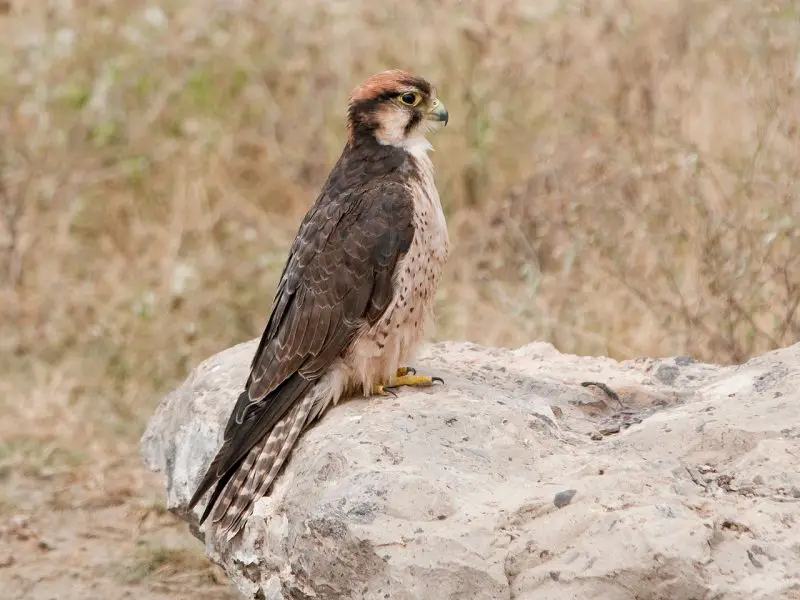
The Lanner Falcon is a medium to large falcon recognized for its slender body, long pointed wings, and a relatively long tail. Its plumage is typically pale below with streaking and darker gray or brown above, and it often has a pale head with a contrasting dark moustache stripe. Compared to the Peregrine Falcon, the Lanner appears less compact and has a lighter, more buoyant flight style.
Native to Africa, the Middle East, and parts of southern Europe, the Lanner Falcon prefers open habitats such as savannas, deserts, and mountainous regions. It often nests on cliff faces and sometimes uses abandoned nests of other large birds. Unlike more urban-adapted falcons, Lanners usually stay away from heavily populated human areas, instead favoring wild and semi-wild landscapes.
Lanner Falcons are known for their cooperative hunting behavior, especially among family groups. They frequently hunt medium-sized birds such as doves and pigeons and are admired for their impressive aerial pursuits. In some regions, they are also traditionally used in falconry, valued for their intelligence, trainability, and strong partnership with human handlers.
Saker Falcon (Falco cherrug)

The Saker Falcon is one of the largest species of falcons, known for its robust build, broad wings, and powerful flight. It features a brownish upper body, often with pale heads, and heavily streaked underparts. Sakers can vary widely in coloration, ranging from dark brown to almost sandy, depending on their geographic origin.
This impressive falcon inhabits the open plains, grasslands, and deserts of Eastern Europe, Central Asia, and parts of the Middle East. It is particularly associated with the vast steppes and semi-arid regions, where it hunts a variety of prey including rodents, birds, and reptiles. In recent years, habitat loss and trapping for falconry have led to population declines, making conservation efforts crucial.
The Saker Falcon holds significant cultural importance, especially in the Middle East where it is prized in traditional falconry. Its powerful and determined hunting style, along with its adaptability to different prey types, make it one of the most respected birds among falconers. International programs now work to protect wild populations while supporting sustainable falconry practices.
Laggar Falcon (Falco jugger)

The Laggar Falcon is a stocky, medium-sized falcon that presents a subdued but handsome appearance. Its plumage is generally gray-brown on the upper side with paler underparts that are lightly streaked. It has a relatively large head, dark moustache mark, and a somewhat heavier build compared to similar species like the Lanner Falcon.
Native to the Indian subcontinent, the Laggar Falcon primarily occupies dry open areas, savannas, and agricultural fields across India, Pakistan, and surrounding regions. It often nests on cliffs, old buildings, or even in large trees, and it tends to be a relatively sedentary species, not migrating over long distances.
The Laggar Falcon is frequently used in traditional falconry in South Asia, though its wild populations have suffered from habitat loss, pesticide use, and competition with introduced species. Its hunting style involves low-level pursuits of birds and small mammals, and it is valued for its tenacity and endurance rather than sheer speed.
Barbary Falcon (Falco pelegrinoides)

The Barbary Falcon is a small, elegant falcon closely related to the Peregrine Falcon but adapted to warmer, arid environments. It has a sleek, compact body with a pale gray-blue back, buff underparts streaked with black, and a distinct dark moustache mark. It is slightly smaller and lighter than the Peregrine, often appearing more slender in flight.
This falcon inhabits parts of North Africa, the Middle East, and southwestern Asia, typically favoring deserts, rocky hillsides, and coastal cliffs. Barbary Falcons are resident breeders in their territories and do not migrate extensively. They often hunt small to medium-sized birds in fast, agile flights and are adept at ambushing prey in open country.
Despite their close resemblance to Peregrines, Barbary Falcons exhibit unique behavioral adaptations suited for hotter climates. They are revered in traditional falconry, particularly in North Africa and Arabia, and are sometimes confused with Peregrines when spotted in overlapping regions. Conservation efforts in some areas focus on protecting key nesting sites from human disturbance.
New Zealand Falcon / Kārearea (Falco novaeseelandiae)
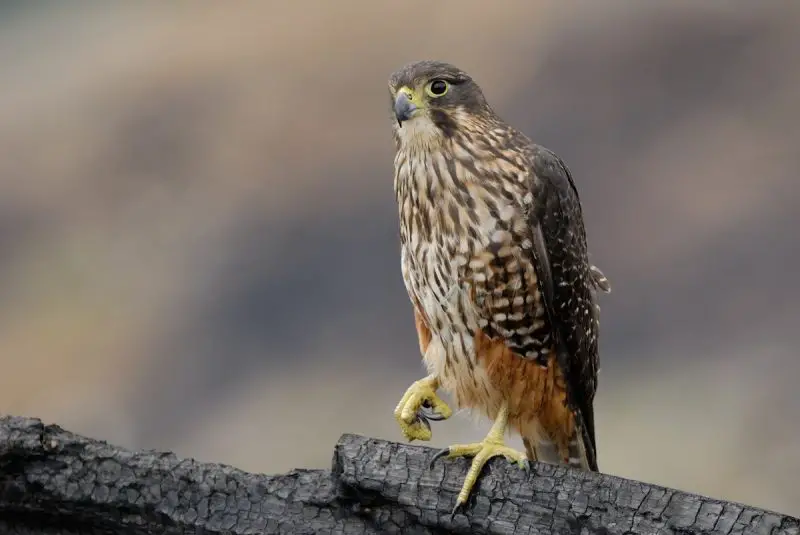
The New Zealand Falcon, locally known as the Kārearea, is a powerful, agile falcon endemic to New Zealand. It is slightly smaller than the Peregrine Falcon but appears larger and more robust due to its broad wings and intense hunting behavior. Its plumage varies regionally but typically includes dark brown to blackish upperparts and paler, heavily streaked underparts.
This unique raptor inhabits a wide range of environments across New Zealand, from coastal areas to forests, alpine zones, and even modified farmland. Unlike many falcons that prefer open terrain, the Kārearea is highly adaptable and often hunts in dense forests, using rapid, surprise attacks to capture prey such as small birds, insects, and occasionally mammals.
The Kārearea holds cultural significance in Māori tradition and remains a treasured symbol of strength and independence. It is currently classified as threatened, primarily due to habitat loss, predation by introduced species, and human-related pressures. Conservation initiatives aim to protect breeding habitats and raise awareness about this remarkable, native predator.
Taita Falcon (Falco fasciinucha)

The Taita Falcon is a small, compact falcon known for its swift flight and bold hunting style. It has dark slate-gray upperparts, a white throat, and rich chestnut underparts marked with fine streaks. Its distinctive facial pattern includes a dark helmet and faint moustache stripe, giving it a fierce appearance despite its size.
This rare falcon inhabits isolated mountainous regions and steep river gorges in East and southern Africa, particularly in Zimbabwe, Zambia, Malawi, and Tanzania. It prefers rugged cliffs for nesting and is closely tied to areas with permanent water sources where prey is abundant. Taita Falcons are highly territorial and typically occupy the same breeding sites year after year.
Taita Falcons are specialized hunters, preying mainly on small birds captured in mid-air. Their populations are considered vulnerable due to their specific habitat needs, low reproductive rates, and threats such as habitat degradation and human disturbance. Conservation efforts are crucial to ensure the survival of this elusive and fascinating species.
Orange-breasted Falcon (Falco deiroleucus)

The Orange-breasted Falcon is a striking, medium-sized falcon known for its vibrant coloration and rarity. It displays dark slate-blue upperparts, a vivid orange chest and belly, and strong black facial markings. Its robust body, broad wings, and short tail contribute to its powerful, agile flight.
This species primarily inhabits tropical and subtropical forests along cliffs and escarpments in Central and South America, from southern Mexico through Guatemala and into parts of northern South America. It is highly dependent on forested mountain areas with abundant bird prey, making it highly susceptible to habitat loss.
Due to its low population density, specialized habitat requirements, and ongoing threats from deforestation, the Orange-breasted Falcon is listed as near-threatened. Intensive conservation programs, including captive breeding and habitat protection, have been initiated to preserve this remarkable raptor in the wild.
Eurasian Hobby (Falco subbuteo)
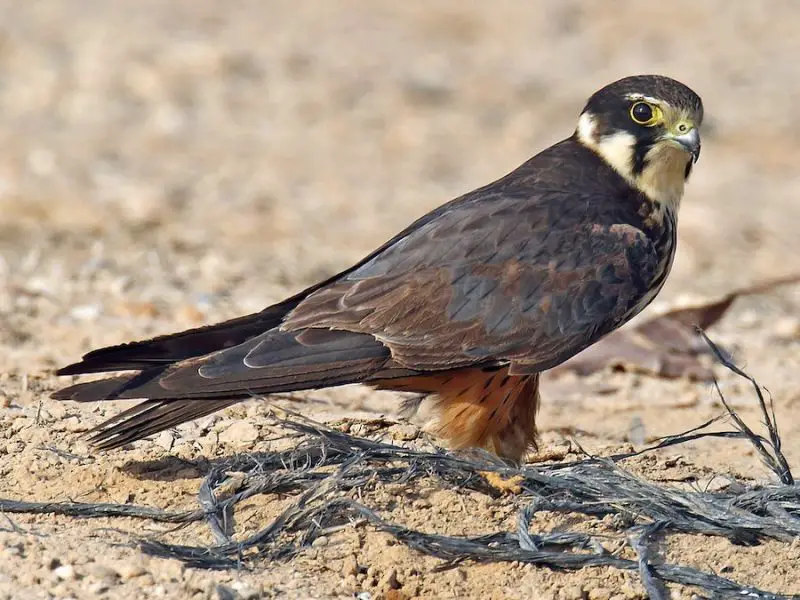
The Eurasian Hobby is a sleek, fast-flying falcon renowned for its aerial agility and insect-catching skills. Adults are characterized by blue-gray upperparts, white underparts streaked with black, and rich rufous thighs and undertail coverts. A bold dark moustache stripe enhances its streamlined, predatory appearance.
This widespread falcon breeds across Europe, North Africa, and Asia, migrating to sub-Saharan Africa and southern Asia for the winter. It prefers open woodland, wetlands, and savanna landscapes where it can hunt insects and small birds with remarkable speed and dexterity. Hobbies often nest in old nests of other birds such as crows.
Eurasian Hobbies are often observed hawking for dragonflies and other flying insects at dusk, exhibiting spectacular aerial performances. They are admired for their graceful flight and are occasionally seen near human habitation during migration, though they generally prefer less disturbed areas for breeding.
African Hobby (Falco cuvierii)
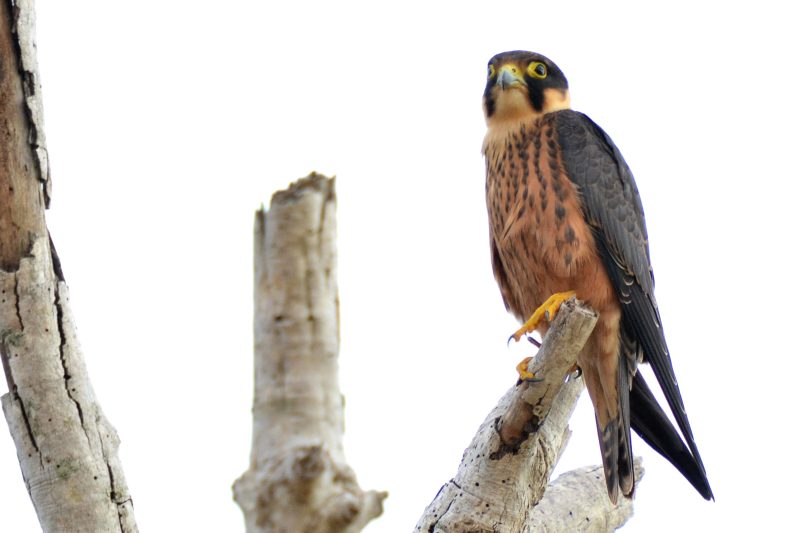
The African Hobby is a small, slender falcon celebrated for its swift, agile flight and insectivorous diet. Its plumage features slate-gray upperparts, a white throat, and a rufous breast and belly with fine streaking. Its relatively long wings and tail give it a graceful, buoyant flight style.
This species is found across sub-Saharan Africa, particularly favoring open woodlands, savannas, and wetlands. It is most active at dawn and dusk when flying insects such as beetles, termites, and dragonflies are abundant. African Hobbies often hunt on the wing, capturing prey with acrobatic maneuvers.
Despite being widespread, the African Hobby is not often seen due to its unobtrusive habits and preference for lightly wooded, less accessible areas. It is generally considered stable, although localized threats such as habitat destruction and pesticide use could impact certain populations over time.
Oriental Hobby (Falco severus)
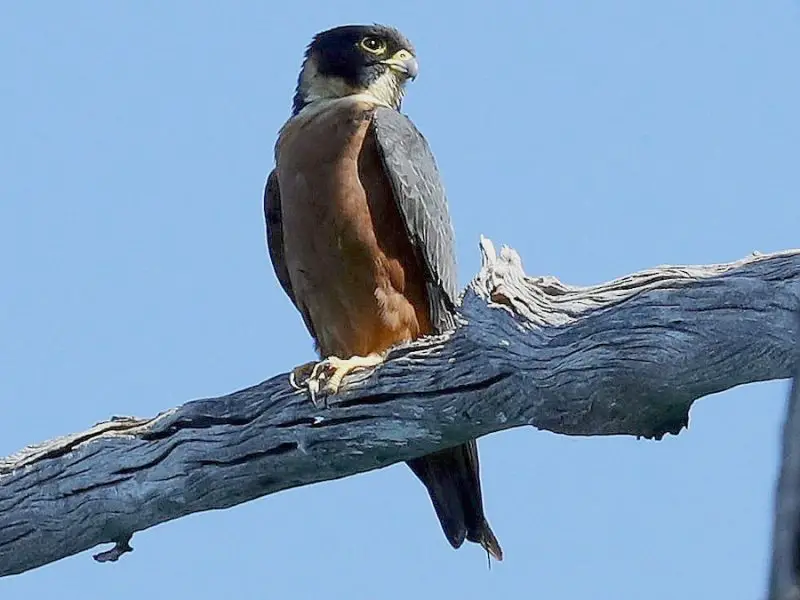
The Oriental Hobby is a small, colorful falcon known for its vivid rufous underparts and dark upperparts. Its slender build, short tail, and narrow wings are adapted for rapid, agile flight. The facial markings include a distinct dark moustache stripe contrasting with its pale throat, enhancing its alert expression.
This species inhabits Southeast Asia, from the Indian subcontinent through southern China and into Indonesia and the Philippines. It favors forest edges, open woodland, and sometimes mountainous areas where it hunts birds, bats, and insects in swift aerial chases. It often nests in tree cavities or uses old nests of other birds.
The Oriental Hobby is admired for its dynamic hunting and is sometimes encountered near human settlements, especially where forests meet agricultural land. Although not currently considered threatened, deforestation and habitat changes could pose future risks to local populations if conservation measures are not maintained.
Australian Hobby (Falco longipennis)
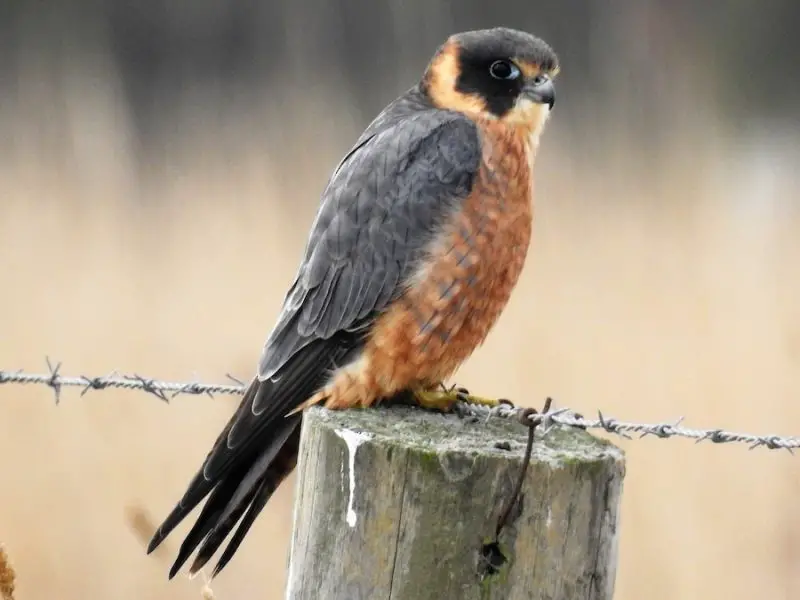
The Australian Hobby is a sleek, medium-sized falcon known for its streamlined body and swift, acrobatic flight. It features dark blue-gray upperparts, pale underparts streaked heavily with dark markings, and a prominent facial pattern with a narrow moustache stripe. Its long wings and tail make it particularly agile when pursuing prey.
This species is widely distributed across mainland Australia, especially in open woodlands, grasslands, and around urban areas. It tends to be more common in the north and less frequent in densely forested regions. The Australian Hobby is highly adaptable and often takes advantage of modified landscapes such as farmland and city parks.
The Australian Hobby primarily hunts small birds, insects, and bats, typically catching them on the wing. It is known for its dusk hunting activities and its tendency to reuse old nests of other birds for breeding. Although generally considered secure, localized declines may occur where pesticide use reduces prey availability.
Brown Falcon (Falco berigora)

The Brown Falcon is a robust and heavily built falcon with highly variable plumage. It often appears brown with pale underparts streaked or blotched with darker marks, although lighter and darker morphs are common. Its heavy bill and broad wings distinguish it from slimmer falcons.
Endemic to Australia and parts of Papua New Guinea, the Brown Falcon inhabits open forests, grasslands, scrublands, and agricultural regions. It is one of Australia’s most widespread birds of prey, adapting well to a variety of environments, including arid inland areas.
Unlike many falcons that specialize in aerial hunting, the Brown Falcon often hunts from a perch or low flight, capturing reptiles, small mammals, insects, and carrion. It is known for its resourceful feeding habits and sometimes even follows grass fires to catch escaping prey. Its diverse diet and adaptability have helped maintain its strong populations across its range.
Common Kestrel (Falco tinnunculus)
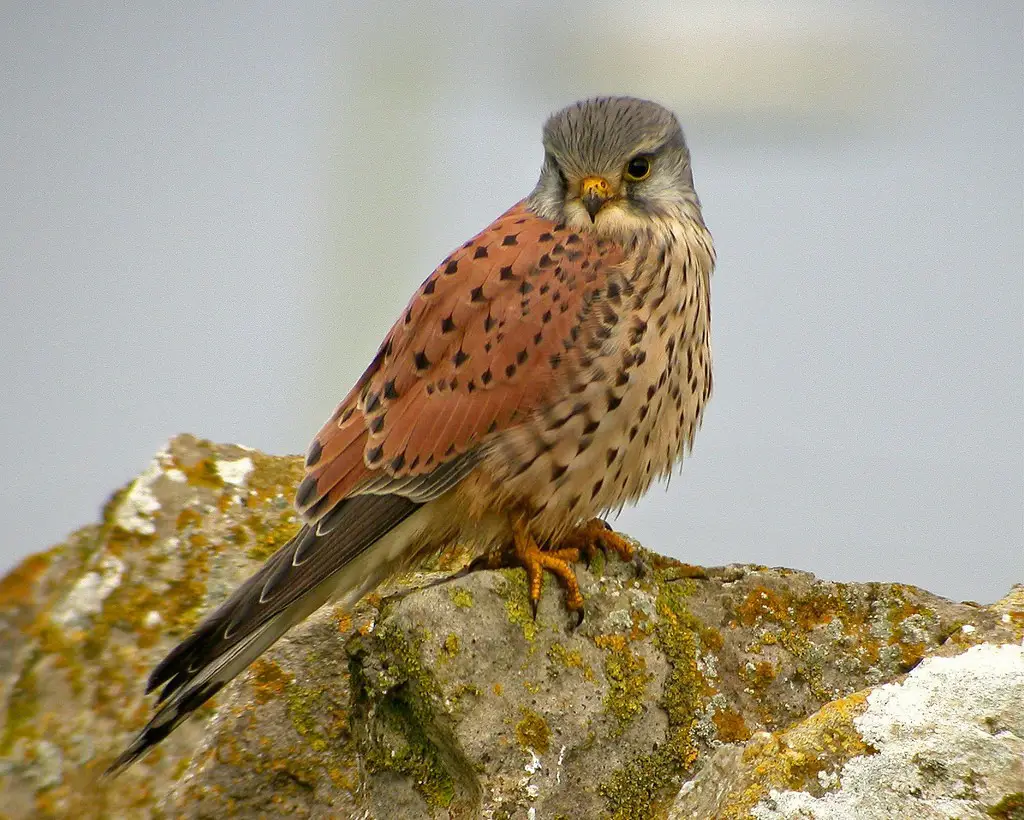
The Common Kestrel is a small to medium-sized falcon, easily recognized by its rufous back and upperwings speckled with black, gray head, and lightly streaked pale underparts. When hunting, it is famous for its “hovering” behavior, holding itself steady against the wind while scanning the ground for prey.
This widespread species ranges throughout Europe, Asia, and Africa, occupying a variety of open habitats such as farmland, heathland, grassland, and even urban areas. It is highly adaptable and often seen perched along roadsides or hovering over fields in search of small mammals and insects.
Common Kestrels are highly opportunistic hunters, with diets varying depending on local availability. They breed in tree hollows, cliffs, and buildings, often using old nests built by other species. Though generally abundant, local populations can fluctuate based on prey abundance and agricultural practices that affect habitat quality.
Lesser Kestrel (Falco naumanni)
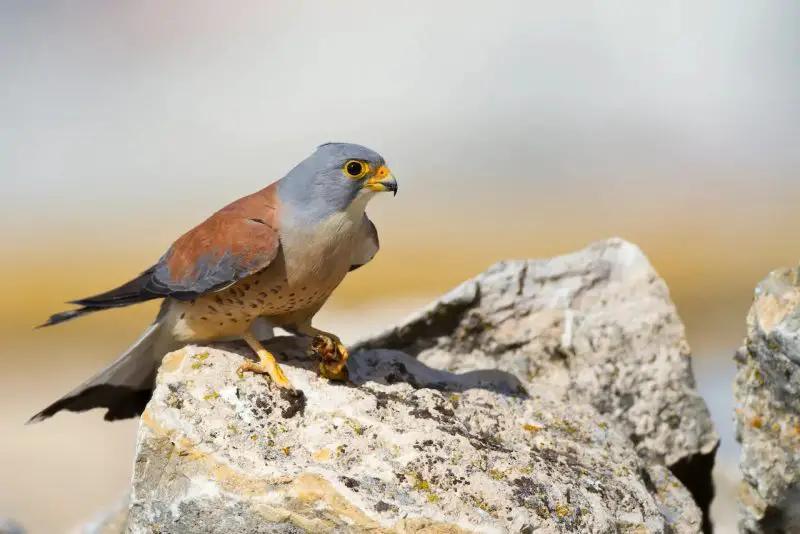
The Lesser Kestrel is a small, graceful falcon resembling the Common Kestrel but distinguished by its slightly smaller size, lighter build, and males lacking the heavy black spotting on the back. Males have a pale blue-gray head and tail and a rusty back, while females are more uniformly brown.
This migratory species breeds in southern Europe, North Africa, and parts of Central Asia, wintering mainly in sub-Saharan Africa and the Indian subcontinent. It prefers open countryside, farmland, and steppe environments, often nesting colonially in buildings, cliffs, or old ruins.
The Lesser Kestrel primarily hunts insects such as locusts and beetles, especially during the non-breeding season. While global populations are recovering thanks to conservation efforts, the species remains vulnerable in parts of its range due to habitat loss and agricultural intensification that reduce available prey.
Australian Kestrel / Nankeen Kestrel (Falco cenchroides)
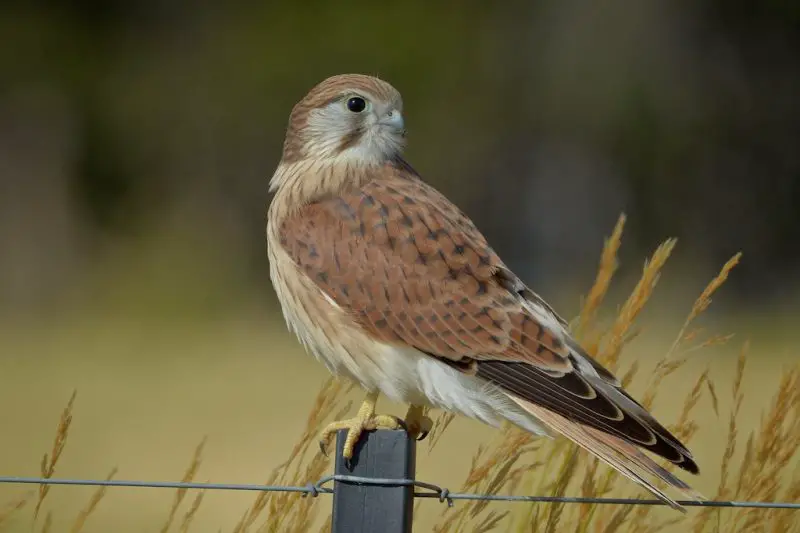
The Australian Kestrel, also known as the Nankeen Kestrel, is a slender, lightly built falcon with pale rufous upperparts, black-spotted back, and off-white underparts. Its face features a narrow black moustache stripe, and it often hovers effortlessly while hunting in open spaces.
This species is widespread across mainland Australia, New Guinea, and nearby islands, inhabiting open woodlands, grasslands, coastal dunes, and urban areas. It is highly tolerant of human-altered landscapes and can often be seen along roadsides, farmlands, and city edges.
The Australian Kestrel primarily feeds on insects, small mammals, and reptiles. Like its relatives, it often employs hovering techniques to locate prey. Breeding usually takes place in tree hollows, cliff ledges, or on building ledges. The species is considered stable and common throughout much of its range, benefiting from its adaptability to various environments.
Greater Kestrel (Falco rupicoloides)
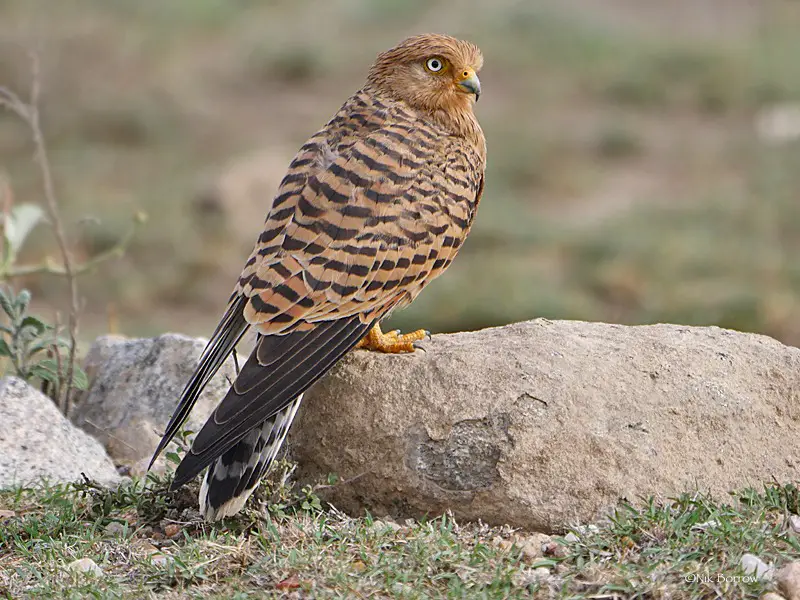
The Greater Kestrel is a medium-sized, pale-colored kestrel with rufous upperparts heavily barred with black and a whitish head and underparts. Its legs are noticeably longer than in other kestrel species, giving it a distinctive silhouette when perched.
Native to the savannas and semi-arid regions of eastern and southern Africa, the Greater Kestrel inhabits open plains, scrublands, and lightly wooded areas. It typically prefers areas with scattered trees or shrubs that offer perching opportunities for hunting.
Greater Kestrels primarily feed on insects, small reptiles, and rodents, often hunting from exposed perches. They are less inclined to hover than other kestrels and instead rely on sharp eyesight and swift attacks from a perch. Despite habitat pressures in some regions, their population is generally considered stable across their range.
Rock Kestrel (Falco rupicolus)

The Rock Kestrel is a medium-sized falcon with a predominantly rufous back and upperwings, lightly streaked underparts, and a grayish head in males. It closely resembles the Common Kestrel but is typically paler and adapted to more arid environments. Its broad wings and slightly rounded tail are well suited for soaring and hovering over rocky terrain.
This species is widely distributed throughout southern Africa, favoring dry, open habitats such as rocky outcrops, mountainsides, and semi-arid savannas. It can often be seen perched on cliffs, telephone poles, or termite mounds, scanning the landscape for prey.
The Rock Kestrel preys primarily on insects, reptiles, and small mammals. It is known for its hovering flight when hunting and often nests in cliff crevices or abandoned stick nests. Its adaptability to rugged and dry habitats has made it a common and stable presence across much of its range.
Spotted Kestrel (Falco moluccensis)
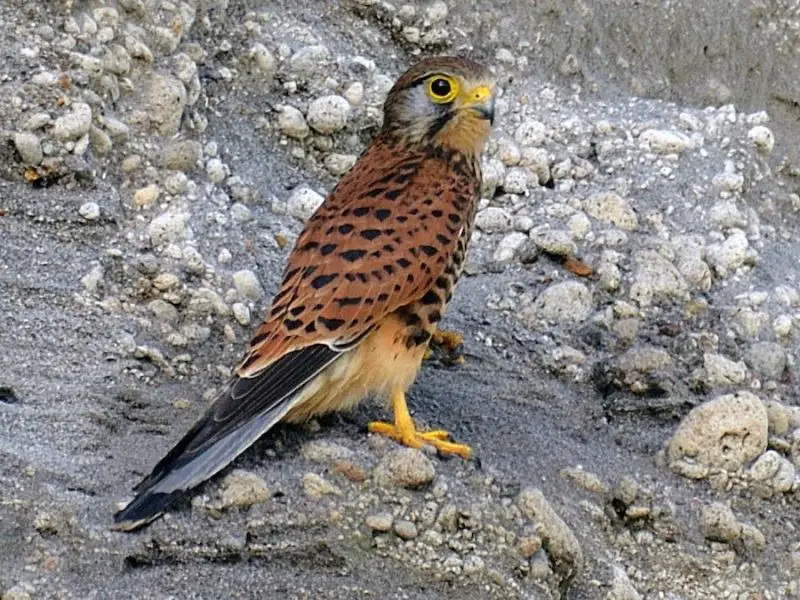
The Spotted Kestrel is a small falcon distinguished by its heavily spotted chest and underparts, reddish-brown upperparts, and dark markings on its face. Males and females are similar in appearance, but males may show slightly brighter plumage.
Native to Indonesia, particularly the islands of Sulawesi and the Moluccas, the Spotted Kestrel inhabits open forests, agricultural areas, and forest edges. It is a resident species that does not migrate, relying on a stable year-round habitat.
This kestrel primarily feeds on insects and small vertebrates, often hunting from low perches or while hovering. Though not as well studied as some other kestrel species, it appears to have stable populations within its limited range, aided by its ability to live in lightly disturbed environments.
Fox Kestrel (Falco alopex)
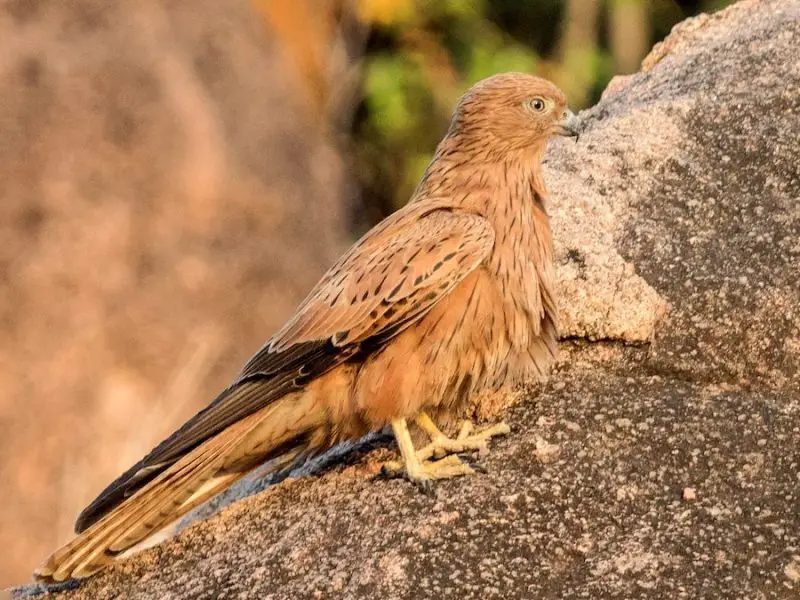
The Fox Kestrel is a striking falcon with rich rufous plumage across its entire body, complemented by black barring on the wings and tail. Its slim build and long pointed wings give it an elegant profile, especially when gliding or soaring.
This kestrel is found across the Sahel region of Africa, from Senegal to Sudan, preferring open grasslands, savannas, and rocky hillsides. It typically avoids dense forests and is often seen perched high above the ground or soaring at great heights.
Fox Kestrels primarily hunt insects, small reptiles, and rodents. They are known for their wide-ranging flights and their tendency to hunt by swooping from elevated perches. Despite facing localized habitat loss, the species maintains a generally stable presence due to the vast extent of suitable open habitats.
Gray Kestrel (Falco ardosiaceus)
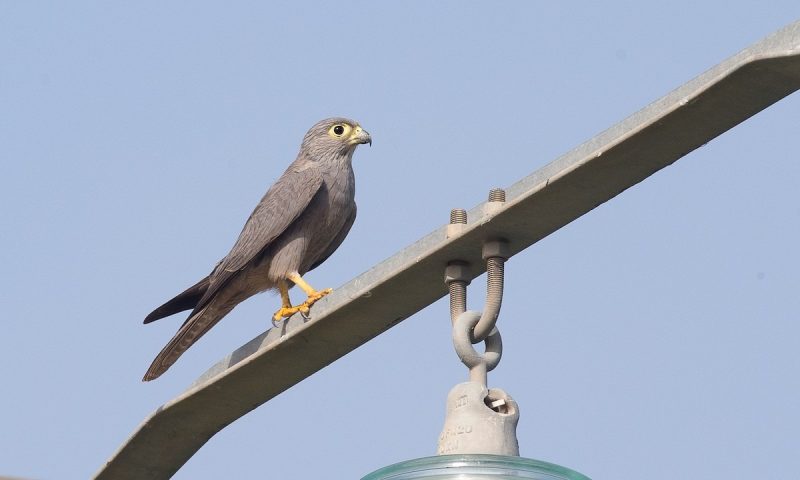
The Gray Kestrel is a small, compact falcon characterized by its uniform gray plumage, short tail, and pale face. Its understated coloration makes it stand out among kestrel species, which are often more brightly colored.
Widespread across sub-Saharan Africa, the Gray Kestrel inhabits savannas, open woodlands, and forest edges. It favors areas with scattered trees and can often be found near water sources, such as rivers and wetlands.
Primarily a crepuscular hunter, the Gray Kestrel feeds on insects, small mammals, reptiles, and amphibians. It often hunts from a perch, swooping down quickly to seize prey. Its preference for dawn and dusk activity, along with its discreet coloring, can sometimes make it difficult to observe in the wild.
Dickinson’s Kestrel (Falco dickinsoni)

Dickinson’s Kestrel is a small falcon with a pale gray head and back, darker flight feathers, and finely streaked white underparts. It has a relatively short tail and broad wings, giving it a compact appearance in flight.
This species is mainly found in eastern and southeastern Africa, where it inhabits open savannas, coastal woodlands, and forest edges, particularly those featuring abundant palm trees. It often perches conspicuously atop isolated trees or utility poles.
Dickinson’s Kestrel feeds largely on insects, small birds, and reptiles, often hunting by short aerial sallies from a high perch. It is considered uncommon throughout much of its range but remains locally abundant where suitable habitat exists, benefiting especially from the presence of open areas with scattered tall trees.
Mauritius Kestrel (Falco punctatus)
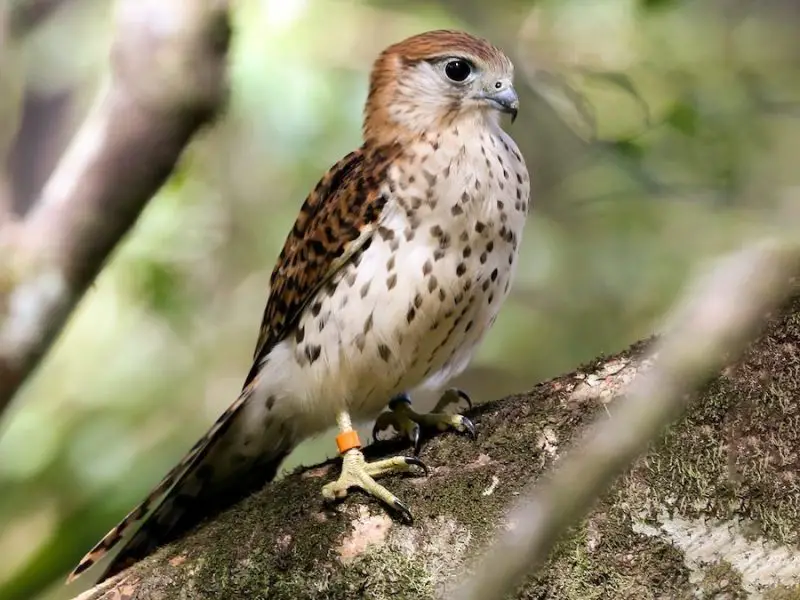
The Mauritius Kestrel is a small falcon that was once critically endangered but has seen a remarkable recovery due to intense conservation efforts. It has a relatively plain appearance, with a streaked, brownish upper body and pale underparts. Males are slightly smaller and more colorful than females, who have darker, more subdued plumage.
This species is endemic to the island of Mauritius in the Indian Ocean, where it primarily inhabits dense forests and forest edges. Its population was critically low in the 1970s, but through captive breeding and reintroduction programs, the Mauritius Kestrel has experienced a significant recovery and now survives in protected areas.
The Mauritius Kestrel preys on insects, small birds, and reptiles. It typically hunts from perches, making quick, short flights to capture prey. Though still listed as vulnerable, ongoing conservation efforts have greatly improved its status, and it is now more commonly seen in the wild, particularly in the forests of Mauritius.
Seychelles Kestrel (Falco araea)
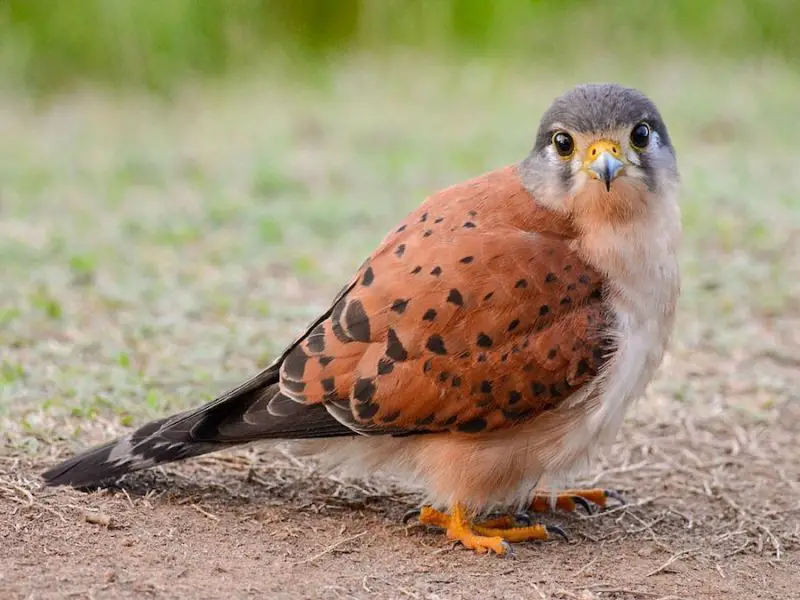
The Seychelles Kestrel is a small falcon endemic to the Seychelles islands, particularly found on Mahé and Praslin. It has a characteristic rufous-brown plumage with darker streaks on the back and a pale underbelly. The species exhibits sexual dimorphism, with males being smaller and having slightly brighter plumage.
This kestrel’s range is restricted to the Seychelles archipelago in the Indian Ocean, where it resides in forested hills, coastal areas, and plantations. Its habitat has been greatly affected by deforestation, but conservation efforts are helping protect its remaining habitat.
The Seychelles Kestrel primarily hunts small vertebrates such as lizards, birds, and insects. It often hunts from perches and makes short flights to catch prey. The species has faced significant population declines in the past but has made a recovery due to intensive conservation programs focused on nest site protection and habitat restoration.
Malagasy Kestrel (Falco newtoni)

The Malagasy Kestrel is a medium-sized falcon with a distinctive appearance, including pale underparts, rufous upperparts, and streaked feathers on its chest and sides. The species has a characteristic dark mask across its eyes and a slightly darker tail compared to the rest of its body.
Endemic to Madagascar, the Malagasy Kestrel inhabits open forests, savannas, and coastal regions, often being found in agricultural areas and near human settlements. It is relatively common across its range and can be found throughout the island.
This kestrel preys on insects, small reptiles, and birds. It is known for its ability to hunt in a variety of habitats, often hunting from a perch or during low, fast flights. The Malagasy Kestrel is not currently considered threatened, though habitat destruction could impact its populations in the future.
Banded Kestrel (Falco zoniventris)

The Banded Kestrel is a small falcon with a distinctive appearance. Its back is typically brown with darker streaks, while the underparts are pale with prominent dark bands. It has a relatively short tail and broad wings, making it agile in flight. This species is smaller than many other kestrels, with a more compact build.
Native to Madagascar, the Banded Kestrel is found in wooded areas and savannas, often at higher elevations. It prefers forest edges and can sometimes be seen near agricultural zones. The species is somewhat secretive and can be difficult to spot due to its cryptic plumage.
The Banded Kestrel feeds mainly on small birds, insects, and reptiles, which it captures while flying or from a perch. Though not widely studied, the Banded Kestrel’s populations seem stable in areas with suitable habitat. Deforestation poses a threat to this species, as it reduces the availability of suitable nesting and hunting areas.
Saint Helena Kestrel (Falco novaezealandiae) – Extinct
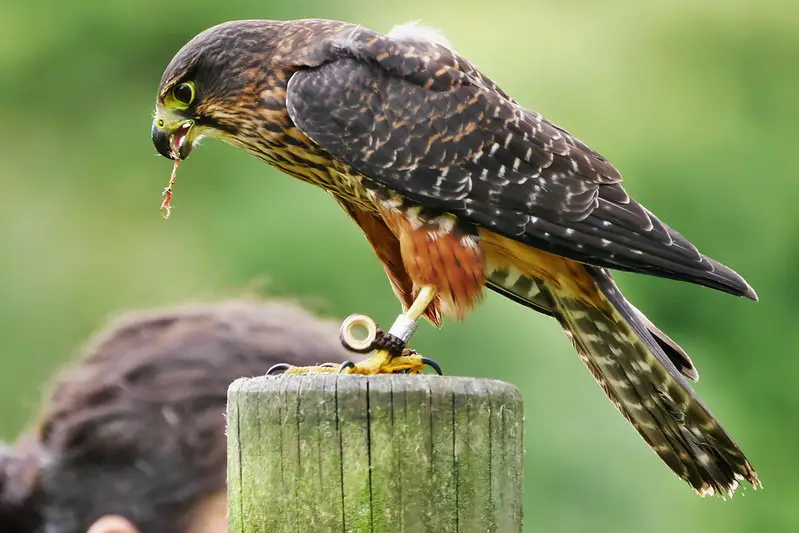
The Saint Helena Kestrel was a small, dark falcon that once inhabited the island of Saint Helena in the South Atlantic Ocean. Its plumage was a mix of dark brown and rufous, with streaks on the chest and a lighter underside. It had a robust build and short tail, similar to other kestrel species.
Endemic to Saint Helena, this kestrel species was known to inhabit the island’s cliffs and rocky outcrops. The introduction of non-native species and habitat destruction led to a dramatic decline in its population, and the species was declared extinct by the early 20th century.
Before its extinction, the Saint Helena Kestrel primarily hunted small invertebrates and birds. It was noted for its relatively solitary nature, often seen hunting from perches or in short, low flights. The extinction of this species serves as a reminder of the impacts of introduced species and habitat alteration on island ecosystems.
Red-footed Falcon (Falco vespertinus)

The Red-footed Falcon is a small and colorful falcon characterized by its striking reddish-orange legs and feet, which stand out against its light gray-blue upperparts and white underbelly. The male is more vividly colored, with a pale blue back and a distinct, dark face mask. Females and juveniles are more brown and streaked but share the characteristic red feet.
This species has a wide distribution across Eastern Europe, Central Asia, and parts of North Africa. It is often found in open landscapes, such as farmland, grasslands, and lowland steppes. During the breeding season, the Red-footed Falcon prefers tree groves, where it nests in abandoned nests of other birds, particularly crows.
The Red-footed Falcon feeds primarily on insects, particularly large grasshoppers, beetles, and locusts, as well as small birds and rodents. It is known for its spectacular hunting style, which involves catching prey in mid-air. This species migrates to sub-Saharan Africa for the winter, making it a migratory bird of prey.
Amur Falcon (Falco amurensis)
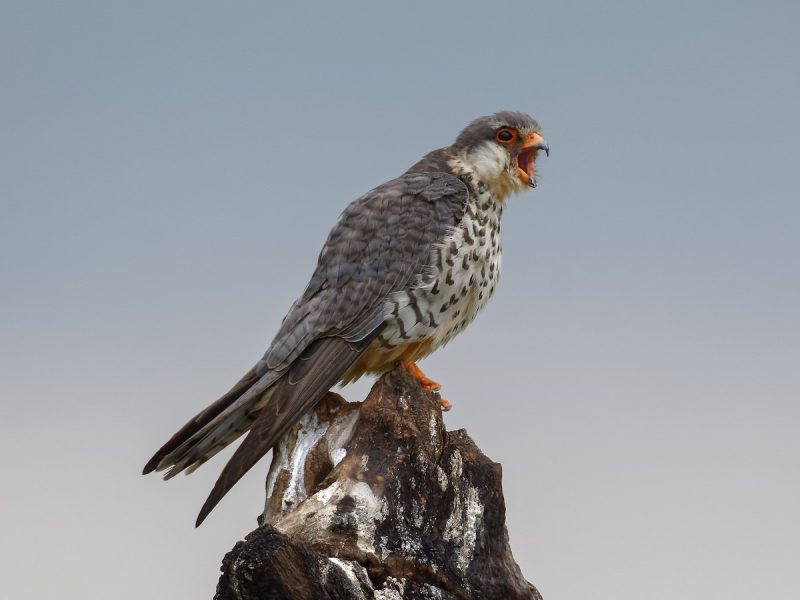
The Amur Falcon is a small falcon known for its remarkable migratory behavior, covering thousands of kilometers between its breeding grounds in Eastern Russia and its wintering grounds in southern Africa. It has a slender body, with males being particularly striking due to their slate-gray upperparts and orange-brown underparts. Females and juveniles are more brown and streaked, resembling other kestrel species.
Amur Falcons breed in the open forests and grasslands of Siberia and northern China. During the winter months, they travel south to the savannas and grasslands of sub-Saharan Africa. The species is typically found in areas with large open spaces and sparse vegetation, where it can hunt insects and small vertebrates.
This falcon primarily feeds on insects, especially locusts and grasshoppers, and small birds. Its ability to migrate over vast distances is a testament to its adaptability and stamina. It has become well-known for its migration, one of the longest known for any bird of prey, and is of significant interest to ornithologists.
Eleonora’s Falcon (Falco eleonorae)
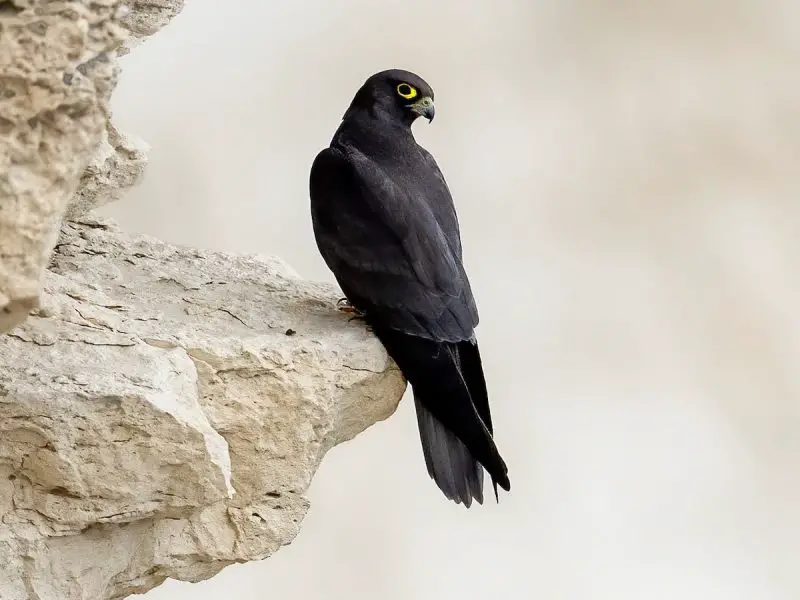
Eleonora’s Falcon is a medium-sized falcon known for its distinctive behavior of breeding during late summer and autumn, which is unusual for falcons. It has a slim body, with a pale gray back, dark wings, and a streaked underside. The males are typically more striking, with a silvery-gray hue on their back and a dark face mask, while females are more brown and streaked.
This species is primarily found on Mediterranean islands, including the Balearics, Sardinia, and Sicily, as well as parts of North Africa. Eleonora’s Falcon prefers rocky, coastal cliffs, where it nests in secluded crevices. The species has a strong preference for coastal areas, where it has easy access to its prey, especially small passerine birds.
Eleonora’s Falcon is a specialist in catching small birds, particularly during their migration periods, making it one of the few falcons that hunts during the late summer and autumn. This species has unique breeding habits, as it often synchronizes its breeding with the migration patterns of small passerines, which serve as its primary food source.
Sooty Falcon (Falco concolor)
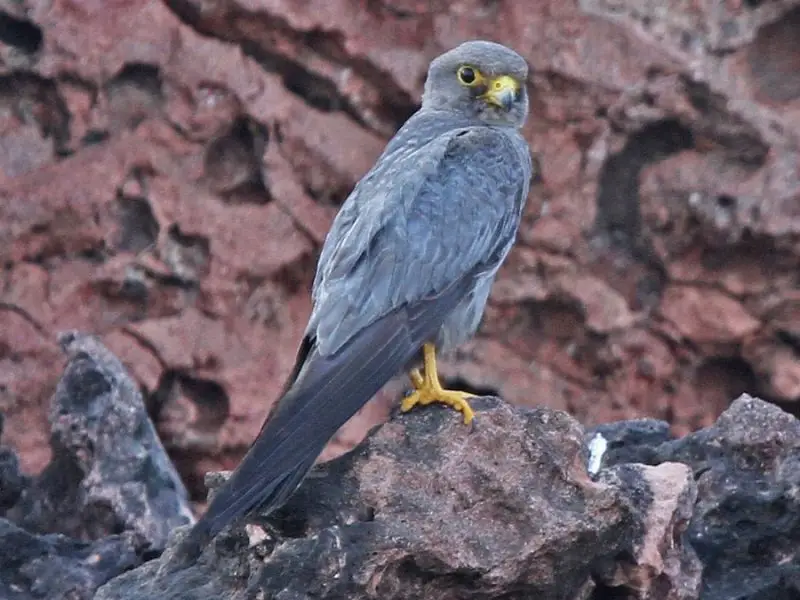
The Sooty Falcon is a medium-sized falcon with dark plumage, which gives it a slightly mysterious appearance. Its back and wings are a deep, dark brown, almost black, while its underparts are lighter and slightly streaked. This species has a long tail, a characteristic of many falcons, and its sharp beak and keen eyes give it a predatory look.
The Sooty Falcon is primarily found in the Arabian Peninsula and parts of northeastern Africa, including the coastal regions of the Red Sea. It prefers arid, rocky environments, often living in coastal deserts and islands with minimal human disturbance. This falcon is known for its solitary nature and is often found alone or in small groups.
This species is known to hunt small birds and insects, typically using its agility to catch prey in mid-flight. Unlike many other falcon species, the Sooty Falcon has adapted to the harsh desert environment and is known to breed in the rocky outcrops of arid regions. The species is considered uncommon but not currently threatened.
Gray Falcon (Falco hypoleucos)
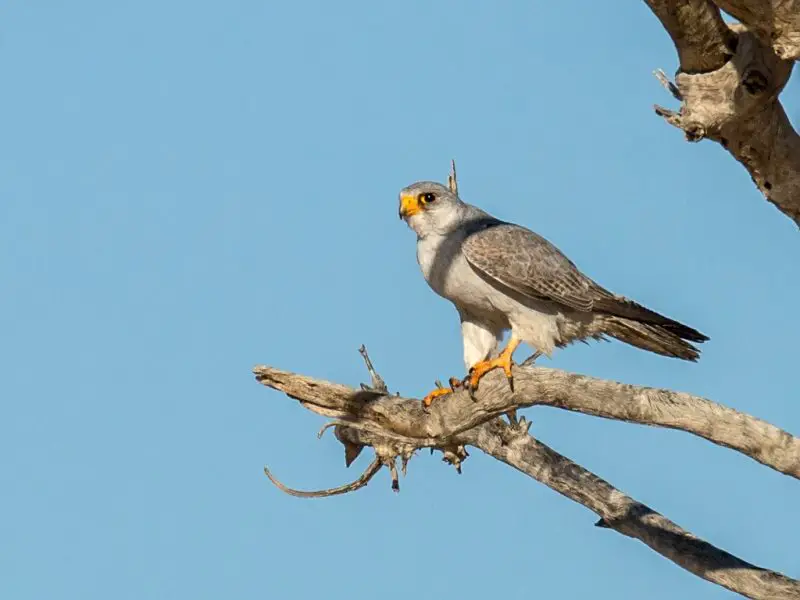
The Gray Falcon is a large, pale falcon with a silvery-gray back, a white face, and dark streaks on its chest and underparts. It has a long, narrow tail and broad wings, allowing it to glide effortlessly through open spaces. Its overall appearance is sleek and aerodynamic, built for high-speed pursuits of prey.
Native to Australia, the Gray Falcon is found in the arid interior of the continent, particularly in the vast, open deserts. It prefers rocky outcrops and flat plains, where it can hunt for small mammals, birds, and reptiles. The species has a somewhat solitary nature, often seen alone or in pairs.
This falcon is known for its swift and direct flight, which it uses to pursue small mammals and birds, often catching them mid-flight. The Gray Falcon is one of the rarer falcon species in Australia, but it is a powerful predator capable of thriving in the tough desert environments.
Madagascar Falcon (Falco falconidae) – Extinct
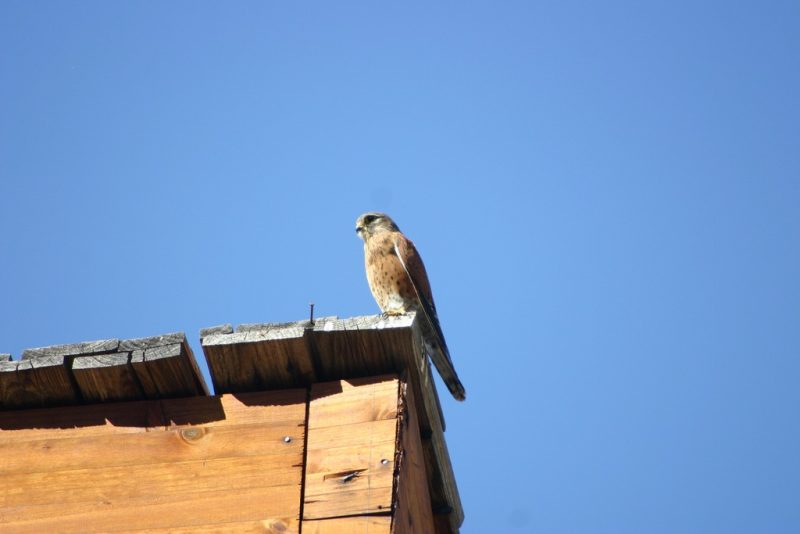
The Madagascar Falcon, now extinct, was once a native species of the island of Madagascar. This falcon was similar in appearance to other kestrel species, with streaked feathers on its chest and a more rufous hue across its body. It had strong wings and an aerodynamic body built for hunting small vertebrates and insects.
Endemic to Madagascar, this species once inhabited a variety of habitats across the island, including forests and grasslands. The Madagascar Falcon is thought to have been a top predator in its ecosystem before its extinction, largely due to habitat destruction and the introduction of non-native predators.
Though extinct, the Madagascar Falcon’s presence in the fossil record has given researchers valuable insight into the evolution of falcon species on islands. Its extinction serves as a reminder of the delicate balance of island ecosystems and the impact of human activity on native species.
Saint Helena Falcon (Falco duboisi) – Extinct

The Saint Helena Falcon was a small falcon species that once inhabited the island of Saint Helena, a volcanic island in the South Atlantic. Its plumage was dark and streaked, with a somewhat cryptic appearance that helped it blend into its rocky habitat. The species had a relatively short, rounded tail and sharp, powerful talons.
Endemic to the island of Saint Helena, this species was restricted to the rugged cliffs and volcanic crags of the island. It primarily fed on small birds and insects, using its quick flight and sharp vision to capture prey. However, the introduction of non-native species and habitat destruction led to its gradual decline.
The Saint Helena Falcon was declared extinct in the 16th century, likely due to predation by introduced species and the loss of its natural habitat. Today, it remains a symbol of the fragile nature of island ecosystems, highlighting the importance of protecting native species and habitats.

